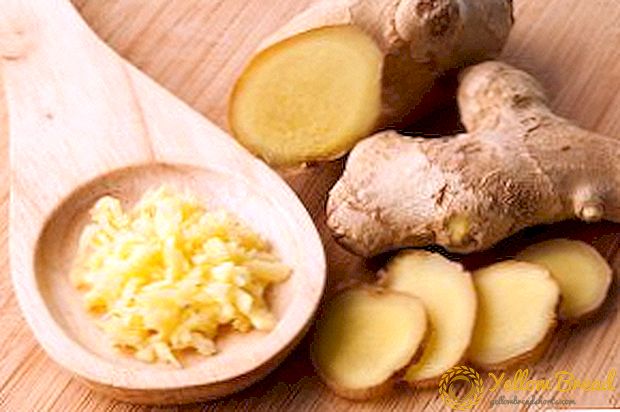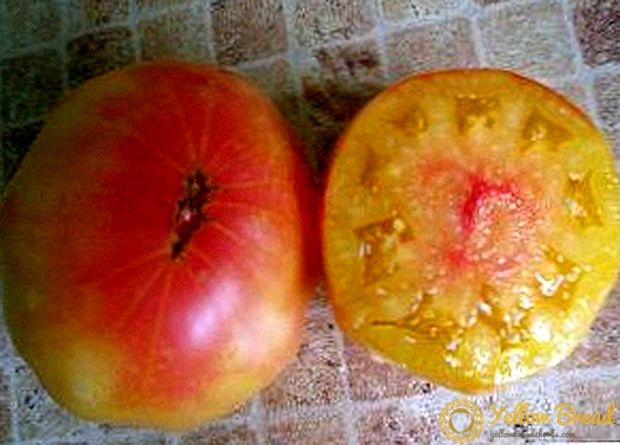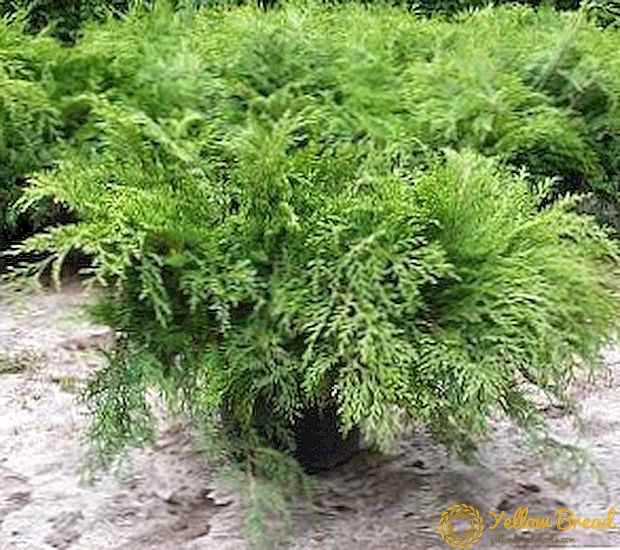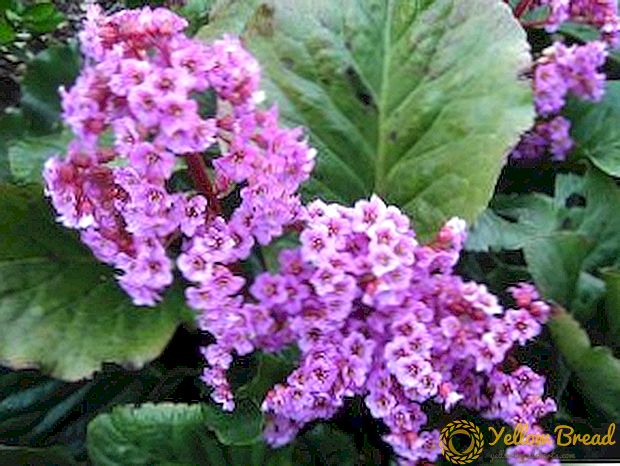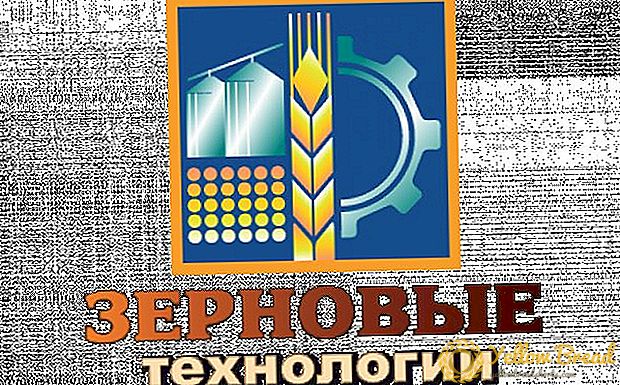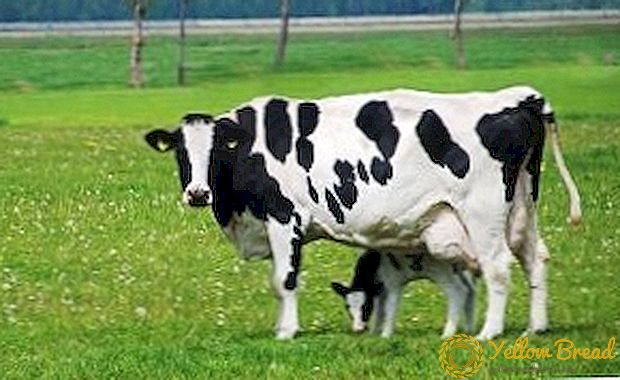
Probably, among all cattle dairy cows have the highest popularity.
After all, these animals are able to please us every day just with space yields, and they often go for meat too, and the beef obtained from them also has a high value.
Most often, such cows are raised on large farms that supply their milk to large plants. But, for individual households, they are no less suitable, since the demand for home-made milk is stable regardless of crises and the time of year.
Below we will get acquainted with the black and motley breed of these dairy beauties and will tell you in detail about their features and productivity.
All the most important and necessary information for cattle breeders on black and white cows.
The history of the breed and its most common populations
To obtain cows with such high milk productivity, a very long breeding selection was carried out, as well as the crossing of local Russian breeds with black-and-white cows of Dutch origin.
As a result, a large number of regional groups of these animals were created, and the differences between some of them are significant.
The main difference is that they were produced from different parent breeds, as well as under different climatic conditions and feeding patterns. After all, the main goal of the breeders was to breed a new polyzonal breed of black-and-white cows from bulls of one Dutch breed.
Among the local maternal breeds of cattle for crossing were used:
- Great Russian breed.
- Zauralskaya.
- Gray Ukrainian.
- Siberian.
- Central Asian.
Today, the five largest populations of black-and-white cows are known, namely: the largest one is central (derived from Central Russian cows), Baltic, Siberian and Ural.
And the fifth population is made up of representatives of different climatic and regional zones - Belarus, Ukraine, Central Asia and parts of the Transcaucasian territories. We draw your attention to features the three leading offspring of the described livestock:

- Black-and-white cows of the central group are considered the largest in size and are the most common.
The weight of females ranges from 550-650 kilograms.Such large indicators of the mass of animals are more characteristic of representatives of the meat type of productivity than of milk, which includes black and motley.
This fact suggests that the central group is also strong in meat productivity. In the constitution, the group described is rather compact, has a very beautiful exterior.
Particular attention is attracted by short legs, which is not surprising with such a large weight. But apart from weight, the group also has the highest yields, which can be 5500-6500 kilograms per lactation period.
But the disadvantage of this offspring of black-and-white cows is the low fat content of their milk - only 3.6-3.7%.
- Representatives of the Ural offspring of the black-and-white breed are lighter in weight and build.
Their bodies are rather dry and dense, their weight is from 500 to 600 kilograms. The meatiness of these cows is comparatively lower, as indicated by higher legs.
Milk productivity is also a little behind the previous group (5000-6000 kg), however, in terms of fat content, the milk of the Ural cows is of higher quality - 3.8-3.9%.
- The Siberian group of black-and-white cattle is even smaller by carcass weight - only 450-550 kilograms.
Such a small constitution is still capable of bringing large quantities of good beef meat.
Although milkiness lags behind in terms of the levels of the two previous groups, it remains high: during the period of one lactation, on average, 4500-5000 kilograms of milk can be obtained, the fat content of which is 3.7-3.8%.
Two groups of black-and-white cows, which were not described, are intermediate in their qualities, although they are in no way inferior to those mentioned above in their milkiness and meat productivity.
All the features of black-and-white cows: what else is different about the breed?
In addition to those described above, this breed also has such features that are characteristic of absolutely all of its members, regardless of the regional group. First of all, it is an udder and its characteristics:

- The udder has a cup shape, which indicates its large size (at least 120 centimeters in girth) and tight attachment to the body of the cow.
It is also quite wide, has a horizontal bottom, but at the same time it is convenient for milking and does not interfere with the animal when moving.
The skin of the udder is very elastic, which allows it to stretch during the accumulation of milk and decrease after milking.
- Due to the nipples placed at different distances from each other, the udder acquires an asymmetrical shape. In particular, a pair of rear nipples is more closely spaced to each other than a pair of front ones, which does not affect the milking process with both hands and the apparatus.
- The udder index is very high - 43-45%.
This indicator is one of the most important for dairy cows, because it indicates the ratio of the amount of milk produced from the two front nipples to the total amount of milk produced by the cow.
Such a high figure, as in this breed, indicates a uniformly developed quarter-share of the udder and high milk productivity of representatives of the breed.
Externally, the black-and-white cattle can be distinguished by a fairly strong physique. Backbone in animals also very durablealthough relatively easy. Limbs strong and stable, properly positioned.
Most likely, this feature was transferred to the representatives of the breed from their local Russian ancestors. Also, you should pay attention to a very flat back and a wide rear part of the body, lower back and cross. The chest of animals is also wide and deep.
The belly is quite voluminous, which is typical of almost all representatives of the dairy type of performance. The very body of these cows is rather long, but proportional.
The color of these cows is naturally black and motley. For the most part, their coat and skin color is black, with a white lower torso, a tail tip and a white spot in the area of the clavicles. The skin is rather rough, under it by the winter period a thick layer of fatty tissues usually accumulates.
Description of the parameters of representatives of the black-and-white breed
In almost all animals, the parameters of the male-type individuals are higher than the parameters of the female-type individuals.
So, if the mass of the heifers of this breed can vary from 450 to 650 kilograms, then the mass of bulls - from 650 and more than 1000 kilograms. In the withers, the height of the first usually does not exceed 130 centimeters, and the height of the second is on average 132 centimeters.
Among other important parameters worth noting:

- The depth of the chest is on average 67 centimeters.
- Breast width - from 39 to 41 centimeters.
- The chest girth is 178-182 centimeters.
- The length of the body is from 153 to 158 centimeters.
- In Maklak the width of the body is 45-46 centimeters.
- The circumference of the metacarpus is 19-20 centimeters.
The main advantages that must be known to future owners of black-and-white cows
Of course, it is better to see once than to hear many times, but still a detailed acquaintance with the virtues of the breed will allow you to be convinced of its uniqueness.
Undoubtedly, the most important advantage is milk production and suitability for keeping in large and individual farms.
But, more specific features representatives of black-and-white cattle:
- Good adaptability to different breeding climatic conditions.
A mixture of genes from local representatives of different regions allows keeping and breeding these cattle in both southern and northern regions. This was what the breeders tried to achieve when breeding black-and-white breed.
However, to keep representatives of the breed on free grazing all year round is not allowed, because they are poorly adapted to frosty temperatures. In hot weather, they will need a lot of water and special shelters, awnings.
- Stability of immunity to the effects of various diseases.
This characteristic can be attributed to the most important, since it is especially important for dairy cows. The fact is that whatever disease affects the animal, it always affects milk production.
Black-and-white cows are quite resistant to common viral diseases, as well as to incurable cow leukemia.
Mastitis and respiratory diseases are tolerated by individuals rather stably, usually without complications. Immunity stability is also manifested in young animals that are fed by mother's milk.
- Good use of green fodder for large areas of pasture, silage and haylage.
For a good milk yield cows must be very good feed, using as much as possible of green vitamin feed. Therefore, in summer, animals are best grazed on open pastures, which they will practically “clean out”.
At the same time, such feeding them will be quite enough for the normal accumulation of milk. In winter, silage and hay should form the basis of the diet, although adding vegetables and concentrates will also have a good effect on overall productivity.
- The ability of individuals to easily acclimatize for weight and milk flow.
This factor is very important for those who are going to purchase a cow of the described breed in another region. This will not create any difficulties for you, since the animal will be able to transfer adaptation without any problems and will fully develop.
Also, representatives of the breed easily get used to and adapt to abrupt changes in weather conditions, prolonged periods of rain and prolonged droughts.
- The precocity of animals.
This breed of cows is not only very quickly gaining its weight, but also very quickly becoming ready for insemination and hatching calves.
Reaching a weight of more than 400 kilograms by the age of one and a half years, chicks are already beginning to show sexual activity, so their first calves usually start 2-4 months earlier than among other breeds.
At the same time, they show very good maternal qualities, incredibly caring attitude towards their offspring. Calving is usually easy, without help.Burenka remains active in this regard even after 10 years, while not reducing milk production.

It is also worth noting that the cows described are very well suited for machine milking. This contributes to convenient arrangement of nipples and their optimal length for the device.
Also, convenient for this is the distance from the udder to the floor, which is on average 61 centimeters. Moreover, thanks to the use of the milking machine, the milking process is reduced to the minimum amount of time, since milk comes out of the nipples very quickly and easily.
Also contributes to this and calm nature of animalswhich easily adapt to artificial noise. When manual milking also does not arise difficulties, because the nipple just fits comfortably in the hand, because their length is 5-6 centimeters.
Milk begins to run from the slightest pressure, especially if the udder is full. Due to this peculiarity, an unresponsive attitude to the milking of animals of this breed much less often leads to the emergence of such a disease as mastitis.
Breeding and breeding work in relation to this breed are still ongoing. They are mainly aimed at increasing the fat content of milk. When crossed with other breeds, black-and-white cows are sources of the milk-producing gene, adaptability and a strong immune system.
How high is the performance of the described cows: the most accurate indicators
Milk productivity as the main criterion for demand for livestock

If we take into account that among all dairy cows in Russia, it is the black-and-white cows that occupy a large share (which is 53%), then we can conclude that the productivity is very high.
If we summarize the results of milk production of absolutely all offspring of the breed, then on average the milk yield indicators are 5.5-8.5 thousand kilograms of milk.
At the same time, fat content usually ranges from 3.4 to 4.2%, and the indicator of protein content in milk varies from 3 to 3.4%.
It is also important that the black-and-white cows have a very good milk yield intensity. When milking with the help of a special apparatus in one minute you can get from 1.2 to 1.4 kilograms of milk.
Features of meat productivity of the breed
It is clear that any animal in the first place is of high value in terms of getting good meat, and especially when it comes to cows. Therefore, in spite of the high milkiness of the chicks, black-and-white bulls are used either for insemination or for slaughter.
The value is even the meat of those cows that reach maturity.
The fact that the meat productivity of this breed is high can be understood by the weight of individuals, the indicators of which we have already indicated above. But, it is also worth mentioning that the young of the black and motley breed is able to gain weight very quickly.
So, if at birth, calves have a weight of 35-40 kilograms, then when feeding with breast milk with the addition of nutritious feeds by 15-16 months their weight already reaches 420-480 kilograms.
If you apply the usual fattening to the young, the increase will be from 600 to 800 grams per day, and with intensive fattening it will be about 1 kilogram.
Already at the age of 1.5-2 years, bulls are usually allowed for meat. Slaughter output from a single carcass may be from 50 to 60%. This indicator also contributes to the very light bones of animals.
The quality of beef received from black-and-white cows is considered satisfactory.It is quite fat and juicy, but according to the main criteria for the taste characteristics of this type of meat, it still does not reach the desired indicators.

